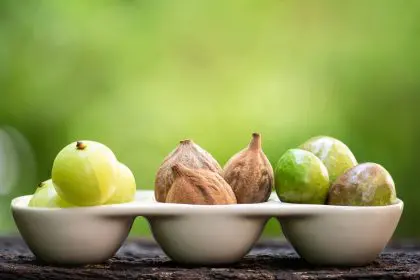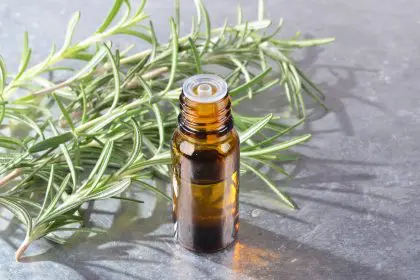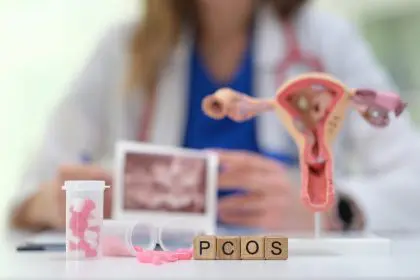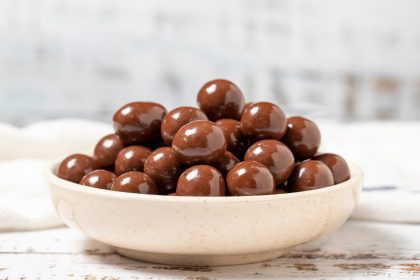That burning sensation in your stomach isn’t just ruining your lunch plans – it’s your body sending desperate SOS signals. If you’re popping antacids like candy and still feeling like there’s a small fire in your belly, you’re not alone. Stomach ulcers affect about one in ten Americans, turning the simple pleasure of eating into an exercise in pain management.
But here’s what the pharmaceutical companies don’t want you to discover: your kitchen might hold more effective remedies than your medicine cabinet. Long before there were purple pills and chalky tablets, people were healing their digestive systems with natural substances that don’t just mask symptoms – they address root causes.
These aren’t just old wives’ tales or internet health fads. Many of these natural approaches have robust scientific research backing their effectiveness. The real surprise isn’t that they work – it’s that more doctors aren’t recommending them alongside conventional treatments.
The cabbage comeback your stomach is craving
This humble vegetable might be the most underrated digestive healer in your produce drawer. While it rarely makes the superfood headlines, cabbage contains powerful compounds specifically suited for ulcer recovery.
The healing juice phenomenon
Raw cabbage juice looks unassuming – pale green and mildly pungent – but it contains a remarkable compound called glutamine that directly targets the lining of your stomach. Unlike medications that reduce acid, glutamine actually helps regenerate the damaged stomach lining, addressing the ulcer at its source.
The science here is impressive. Studies show that drinking fresh cabbage juice can heal ulcers in as little as 7-10 days, significantly faster than conventional treatments alone. Participants drinking about a quart of fresh cabbage juice throughout the day experienced dramatic pain reduction within just 3 days.
The glutamine in cabbage serves as a primary fuel source for the rapidly dividing cells that make up your stomach lining. This provides the raw materials needed for your body to patch the ulcerated area. Think of it as delivering lumber and bricks directly to a construction site, rather than just putting up a “Danger” sign around the damage.
If drinking plain cabbage juice sounds unappealing, try mixing it with carrot or apple juice to improve the flavor while maintaining its healing properties. Just remember that heat destroys many of the beneficial compounds, so juicing fresh is crucial for maximum benefit.
The honey miracle hiding in plain sight
That jar of honey in your pantry isn’t just for sweetening tea – it’s a powerful medicine with specific properties that make it uniquely effective against the bacteria that cause most ulcers.
The manuka magic
Not all honey is created equal when it comes to healing ulcers. Manuka honey, produced by bees that pollinate the Manuka bush in New Zealand, contains additional antibacterial compounds that make it particularly effective against H. pylori, the bacteria responsible for most stomach ulcers.
What makes Manuka honey special is its high concentration of methylglyoxal, which penetrates bacterial biofilms that normally protect H. pylori from both your immune system and antibiotics. This allows the honey to disrupt the bacterial colony from the inside out.
The viscous nature of honey also physically coats ulcers, creating a protective barrier between stomach acid and the damaged tissue. This dual-action approach – protecting while healing – makes honey uniquely effective compared to single-mechanism medications.
Look for Manuka honey with a UMF (Unique Manuka Factor) rating of 10+ for therapeutic benefits. Take one tablespoon on an empty stomach before meals and before bed. The timing is important – an empty stomach allows direct contact between the honey and the ulcerated area before food or beverages dilute it.
The root that outperforms acid blockers
While pharmaceutical companies have spent billions developing acid-blocking medications, one ancient root has been quietly demonstrating comparable effectiveness with fewer side effects.
The licorice factor
Not the twisted red candy, but actual licorice root contains compounds that both soothe inflamed tissue and increase the production of protective mucus in the stomach lining. The key compound, glycyrrhizin, has been shown to inhibit the growth of H. pylori while stimulating cellular regeneration.
However, regular licorice can raise blood pressure when consumed regularly. That’s why deglycyrrhizinated licorice (DGL) – with the blood pressure-raising compound removed – is the preferred form for ulcer treatment. This modified version retains the healing benefits without the potential side effects.
DGL works in a fundamentally different way than conventional ulcer medications. Rather than blocking acid production, it stimulates your body’s natural protective mechanisms – increasing both the quantity and quality of the mucus that shields your stomach lining from damage.
Chewable DGL tablets, taken before meals, allow the compounds to mix with saliva – an important step that activates its healing properties. This pre-meal timing creates a protective layer before food triggers acid production, preventing the pain cycle before it begins.
The clay solution from ancient medicine
Some of the most effective natural remedies have been used for thousands of years across diverse cultures. One such substance – so simple it seems implausible – has a remarkable ability to heal digestive damage.
The bentonite breakthrough
This specialized clay forms when volcanic ash ages, creating a mineral-rich substance with a unique molecular structure that attracts toxins and harmful bacteria like a magnet. When consumed, bentonite clay swells and moves through your digestive tract, collecting irritants while delivering beneficial minerals to damaged tissue.
The negatively charged clay particles specifically bind to the positively charged H. pylori bacteria, helping to remove them from the stomach lining where they cause damage. This gentle detoxification process supports your body’s natural healing mechanisms without disrupting beneficial gut bacteria.
Beyond bacteria binding, bentonite clay provides a physical barrier between stomach acid and ulcerated areas, giving them time to heal. The clay’s rich mineral content, including calcium and magnesium, provides raw materials for tissue repair and proper muscle function in the digestive tract.
Mix one teaspoon of food-grade bentonite clay in 8 ounces of water, stirring with a non-metal utensil until well combined. Drink this mixture once daily, away from meals and medications. Start with a smaller amount and gradually increase to assess your body’s response.
The lifestyle shifts that accelerate healing
Natural remedies work best when supported by lifestyle changes that address the underlying causes of ulcers. These adjustments create an environment where healing can happen more efficiently.
The stress-ulcer connection
The link between stress and ulcers isn’t just psychological – it’s biochemical. Chronic stress triggers the release of cortisol, which increases stomach acid production while reducing blood flow to the digestive tract. This creates the perfect storm for ulcer development and prevents healing of existing damage.
Stress reduction techniques aren’t just complementary – they’re essential components of natural ulcer treatment. Deep breathing exercises specifically activate your parasympathetic nervous system, shifting your body from “fight or flight” to “rest and digest” mode. This physiological shift reduces acid production while improving blood flow to the stomach lining.
Regular meditation practices have been shown to reduce cortisol levels by up to 20%, creating systemic changes that support healing throughout your digestive tract. Even just 10 minutes daily can create measurable improvements in both ulcer symptoms and healing rates.
Physical movement that emphasizes gentle stretching, like yoga or tai chi, reduces muscle tension that can restrict blood flow to digestive organs. Improved circulation means better delivery of nutrients to damaged tissues and more efficient removal of inflammatory compounds.
The most effective approach combines several of these natural remedies with appropriate lifestyle adjustments. This multi-faceted strategy addresses both the symptoms and the underlying causes of ulcers, creating sustainable healing rather than temporary relief.
Unlike conventional treatments that often require indefinite use to maintain symptom control, these natural approaches aim to restore your body’s natural balance. Once healing occurs, many people find they can maintain digestive health with occasional use of these remedies during stressful periods or after dietary indiscretions.
The kitchen, garden, and natural world offer powerful tools for healing stomach ulcers – tools that work with your body’s innate healing capacity rather than simply suppressing symptoms. These approaches don’t just mask the fire in your stomach – they help rebuild the damaged tissues and restore proper function to your digestive system.

















